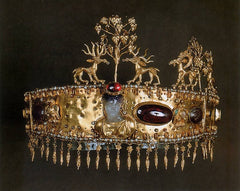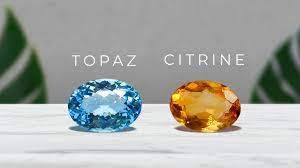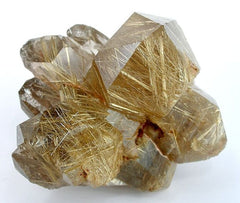All you want to know about Garnet: The January Birthstone
Jan 18 2016 0 Comments Tags: 4cs, birthstone, buying, bying, cut, garnet, gemological, gemstone, information, january, sources, species
 The very first gemstone in the calendar is the garnet – and what a consolation prize for those celebrating their birthdays in wet, windy and wild January!
The very first gemstone in the calendar is the garnet – and what a consolation prize for those celebrating their birthdays in wet, windy and wild January!
It takes its name from the Latin granatus, from granum, meaning grain or seed; it’s very possible that this is a reference to the fact that the garnets resemble pomegranate seeds in their vivid red colour. Although this is the colour we most often associate with the gemstone, they can in fact be found in almost every colour – the widest range of hues of any gem! One of the most recently discovered colours of garnet is the rare blue garnet, which was discovered in the late 1990s in Madagascar.
 As a versatile stone with such a long history, there is a great deal of vintage garnet jewellery available, as well as contemporary.Garnets were certainly very popular with the Romans who gave them their modern name; they wore them in rings and traded them. Before then, they had been popular with Ancient Egyptian pharaohs and then many, many years later they became the nucleus of a cottage industry in Bohemia where they were mined. In the picture you can see a Sarmatian gold diadem with garnet, almandine, pearls, and turquoise from the Khokhlach burial mound (1st century AD, Hermitage Museum).
As a versatile stone with such a long history, there is a great deal of vintage garnet jewellery available, as well as contemporary.Garnets were certainly very popular with the Romans who gave them their modern name; they wore them in rings and traded them. Before then, they had been popular with Ancient Egyptian pharaohs and then many, many years later they became the nucleus of a cottage industry in Bohemia where they were mined. In the picture you can see a Sarmatian gold diadem with garnet, almandine, pearls, and turquoise from the Khokhlach burial mound (1st century AD, Hermitage Museum).
If the garnet’s illustrious history has piqued your interest enough to consider buying one, you’ll need to keep reading...
Garnets are a group of silicate minerals, which possess similar physical properties and crystal forms, but differ in chemical composition. Below you will find the gemological properties of the January stone.
- Chemical: Isomorphous series (garnets are a series of chemicals rather than just one)
- Crystal Habitat: Cubic or Rhombic Dodecahedron
- Crystal System: Cubic
- Hardness: 6.5 – 7.5
- Refractive Index: 1.74 – 1.89
- Cleavage: None
- Transparency: Translucent to Opaque
 Garnet species and sources:
Garnet species and sources:
Garnet is a gem group that occurs in over twenty varieties. Of these varieties, six main types are used as gems: Pyrope, Almandite, Spessartite, Grossularite, Andradite and Uvarovite.
- Pyrope: China, Madagascar, Myanmar (Burma), South Africa, Sri Lanka, Tanzania and the USA.
- Pyrope (rhodolite): Brazil, India, Sri Lanka, Thailand and the USA.
- Almandite: Brazil, India, Madagascar, Sri Lanka and the USA. .
- Spessartite: Brazil, China, Kenya, Madagascar, Myanmar (Burma), Namibia, Sri Lanka, Tanzania and the USA.
- Grossularite (hydrogrossular): Myanmar (Burma), South Africa and Zambia.
- Grossularite (hessonite): Brazil, Canada, Madagascar, India, Tanzania and the USA.
- Grossularite (leuco garnet): Canada, Mexico and Tanzania.
- Grossularite (tsavorite): Kenya and Tanzania.
- Andradite (demantoid): Russia, China, Korea, USA and Zaire.
- Andradite (melanite): France, Germany, Italy and the USA.
- Andradite (topazolite): Italy, Switzerland and the USA.
- Uvarovite: Canada, Finland, India, Poland, Russia and the USA.

Defining the Garnet value
-
Garnets are a very versatile gem, found in almost every cut. Larger, more valuable garnets tend to be cut in ways which retain the most carat weight. The skilled hands of cutters the world over work them into many classical shapes, but also increasingly into modern, imaginative designer cuts.
- Garnets come in almost every colour but of course the most famous is the distinctive deep red. The rarest garnet colour is the blue. The gem rarely occurs in colour-change varieties.
- Garnets are prized for their clarity and vitreous (glossy) lustre, with a high refractive index. Usually clean stones, they occasionally contain small asbestos inclusions, which cause a star effect called asterism, treasured for its rarity.
- Garnets are to be found in all carat. Some garnets, like almandine, are abundant even in larger sizes, but others, such as demantoid and tsavorite are much rarer and increase in value because they are much rarer.
Garnet Treatment
Garnets are not artificially enhanced.

January’s birthstone & the Second year of marriage Aniversary.
So apart from being January’s birthstone, what are the traditions associated with the garnet? Well, it is said to bring successful business, encourage compassion, foment self-confidence and even aid good circulation. It is the gemstone of the state of New York and the stone for a second anniversary.
Garnet Care and Cleaning
Once you have considered all this and purchased your garnet, you’ll want to keep that shine with the correct care. In this case, a soft brush and warm soapy water will do – not, under any circumstances, steam. You can also use ultrasonic treatments on any variety of garnet apart from demantoid.
If you decide to acquire garnet jewellery, be assured that the joy of having this beautiful gemstone, gift from Nature, will be long lasting.
0 comments






Leave a Comment